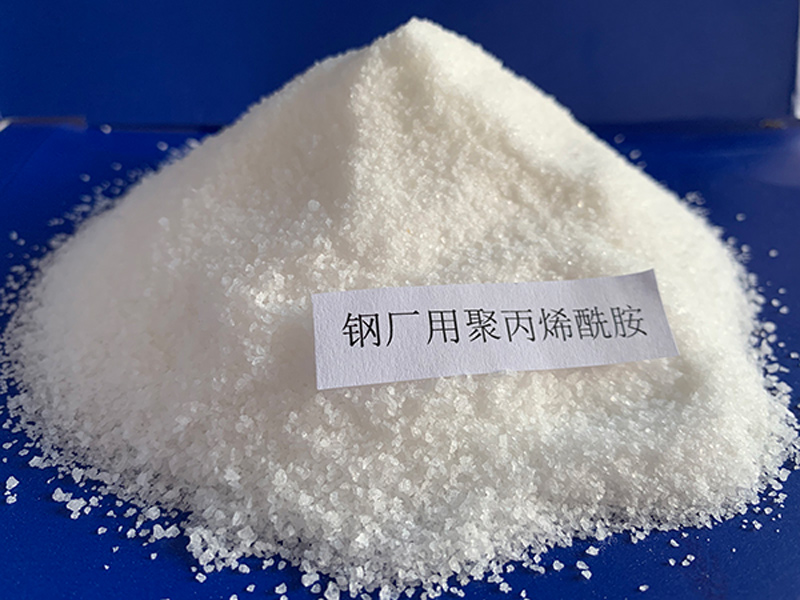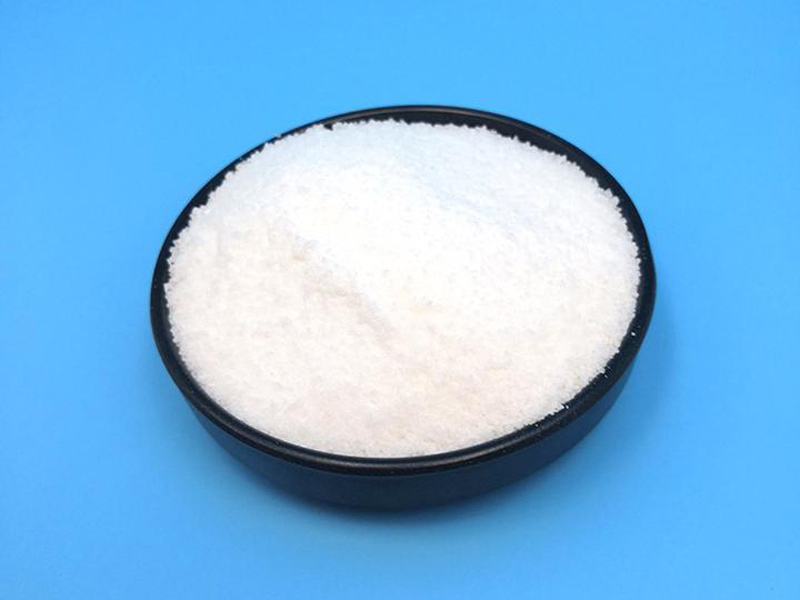
Product Introduction: Polyacrylamide (PAM) for Steel Plants
Polyacrylamide (PAM) for steel plants is a water-soluble high-molecular-weight polymer. Due to the presence of a certain number of polar groups in its molecular chain, it can adsorb suspended solid particles in water, causing them to bridge between particles or coagulate into larger floccules through charge neutralization. Therefore, anionic polyacrylamide (PAM) can accelerate the settlement of particles in suspensions, resulting in significantly faster solution clarification and enhanced filtration effects. Cationic polyacrylamide, on the other hand, excels in the sludge dewatering process within steel plant water treatment, improving sludge dewatering efficiency and effectiveness.
Usage Instructions for Polyacrylamide in Steel Plants:
Preparation: Prepare a 0.1%-0.3% concentration aqueous solution of polyacrylamide for steel plants. It is preferable to use neutral water without saline impurities.
Dissolution: Evenly sprinkle anionic or cationic polyacrylamide into stirring water, controlling the stirring speed at 100-300 rpm. In winter, mild heating (<30°C) can accelerate dissolution.
pH Adjustment: Adjust the pH value of the treated liquid to maximize the effectiveness of anionic polyacrylamide (through experimentation to determine the optimal pH and PAM dosage).
Mixing: When adding the product solution, accelerate mixing with the treated liquid. Once flocculation occurs, reduce stirring speed to facilitate floc growth and settlement.
Material Selection: Avoid using iron or copper containers for dissolving polyacrylamide to prevent chemical reactions that may affect its performance.
Dissolution Time: Ensure adequate dissolution time, at least 60 minutes in winter due to lower water temperatures. In summer, the dissolution time can be shortened to about 40 minutes.
Precautions for Using Polyacrylamide in Steel Plants:
Dissolution Temperature: Maintaining an appropriate temperature accelerates dissolution but excessively high temperatures can break down polymer chains, reducing effectiveness. The optimal dissolution temperature is 15-35°C.
Mixing Conditions: Avoid excessive shear force during dissolution, as it can degrade the polymer. Low-speed agitators like anchor, frame, or multi-layer paddle types are recommended, operating at about 60 rpm. High-speed centrifugal pumps should be avoided; piston or diaphragm pumps are more suitable.
Uniform Dispersion: Uniform dispersion is crucial for dissolution. Use a mechanical vibrating screen (10-mesh) to feed material after starting the agitator, minimizing the formation of hard-to-dissolve "large clumps" or "fish eyes".
Avoid Contact with Iron: In dissolution, mixing, and feeding systems, plastics, enamel, aluminum, stainless steel, and other compatible materials are preferred.
Packaging and Storage of Steel Plant-Specific Polyacrylamide:
Packed in 25 kg bags (lined with plastic bags and externally with plastic-coated kraft paper bags). This product is non-toxic but should be stored in a dry, rain-proof environment, away from direct sunlight.
By leveraging these detailed guidelines and precautions, steel plants can maximize the effectiveness of polyacrylamide in their operations, ensuring optimal water treatment and sludge dewatering results.
Specific Applications of Polyacrylamide in Steel Plants
The polyacrylamide (PAM) series for steel plants consists of high-polymerization, synthetic, water-soluble, linear high-molecular-weight polymers. Fully soluble in water due to its particulate form, PAM rapidly dissolves. Different types of PAM possess distinct active groups, enabling the flocculation of various suspended particles for easy filtration and separation. This product series is practically insoluble in any organic solvent but highly soluble in water, exhibiting clarification and purification effects, settling enhancement, filtration promotion, thickening capabilities, and other functionalities.
In the precipitation treatment process of dust removal wastewater in steel plants, the wastewater undergoes pre-treatment in separation equipment, typically hydrocyclones or spiral classifiers, before entering the sedimentation basin. During this stage, large particulate impurities are removed from the wastewater using gravitational principles. Depending on the water quality, if the wastewater's pH is not neutral, a pH adjustment tank is required to neutralize the pH before adding a flocculant for precipitation treatment. In the sedimentation basin, a flocculant, polyacrylamide, is added to flocculate and precipitate impurities in the wastewater. Typically, steel plant PAM manufacturers recommend using anionic polyacrylamide for this process due to its electrical charge properties, which enable rapid precipitation of steel plant wastewater with excellent flocculation effects.


